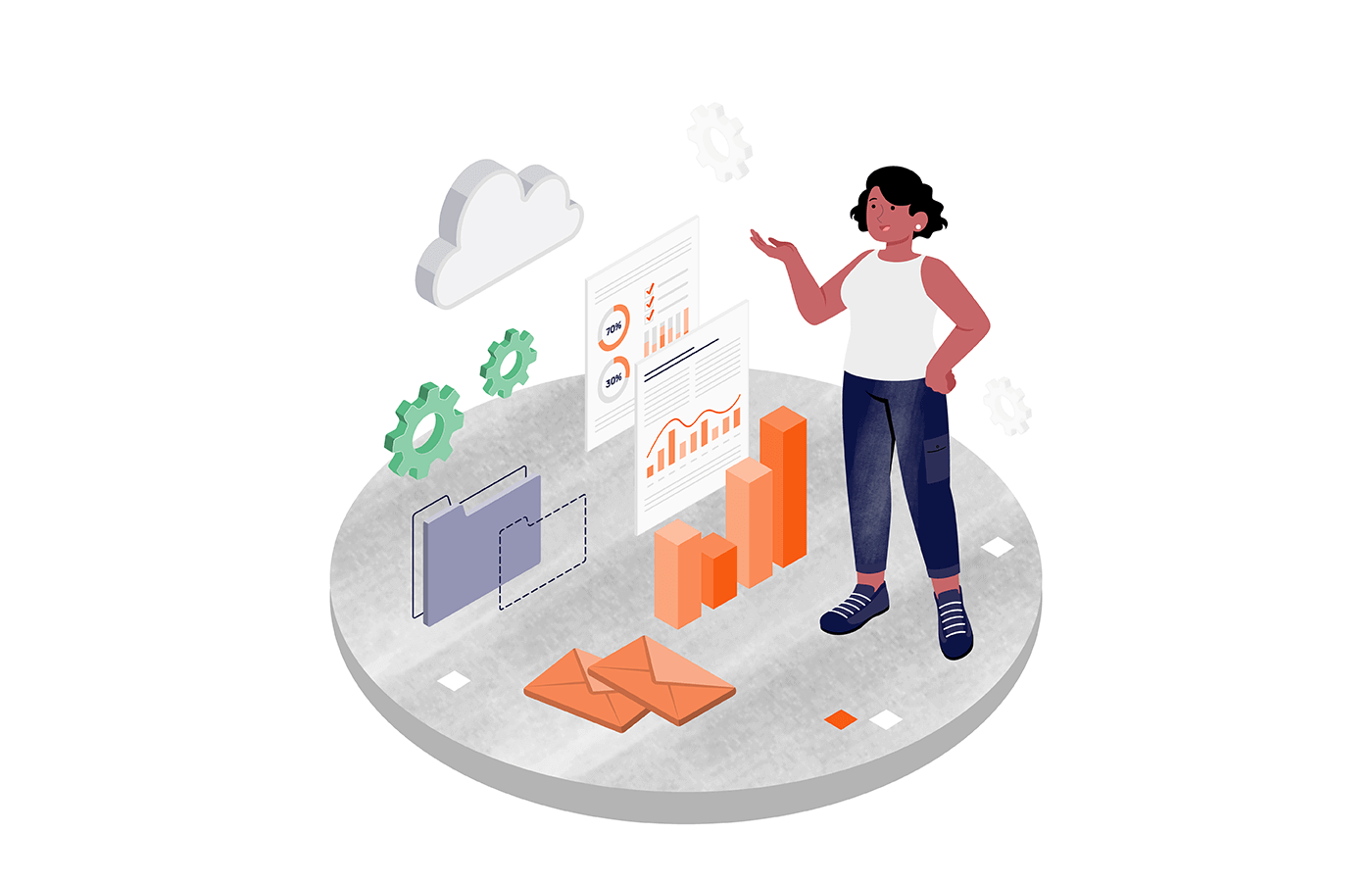Creating a marketing strategy without data is like taking a trip without an itinerary.
Sure, you can try out a few random restaurants and outings and hope for the best… But you can’t expect an exceptional customer experience if you don’t create a research-backed travel plan.
Marketing efforts are no different. To create marketing campaigns that help you reach ambitious goals, you need data sources that supply you with insights in real time.
Ready to learn more about big data and how to use it to create better marketing results?
Let’s get started.
What is Data-Driven Marketing?
Data-driven marketing relies heavily on insights from customer data. This marketing style helps marketers learn more about their target audiences’ behavioral patterns, needs, and pain points.
With this real-time data in hand, marketing teams can craft tailored campaigns that help audiences feel seen and understood.
Let’s look at a few scenarios to better drive this concept home.
Scenario 1: When an entrepreneur sets out to research their business idea, they rely on robust data and business plan examples as blueprints. They research their target market’s core needs, top industry competitors, and the financials of starting and maintaining the business.
For example, if you want to start a business in Florida, you should focus on understanding the target market’s core needs, top industry competitors within the state, and the financials of starting and maintaining the business in Florida’s unique economic landscape.
Scenario 2: The same goes for marketing planning. Marketers use data-driven approaches to identify target audiences, personalize messaging, and optimize marketing channels for better engagement and conversions.
Without this initial time investment, marketers struggle to understand how to design a marketing campaign aligned with their goals and the audience’s core needs.
The Benefits of Using Data in Marketing
Data-driven marketers can look forward to endless benefits from their strategic campaign approaches. Industry experts predict that by the end of 2026, more than 65% of companies will be data-driven, utilizing insights to enhance performance.
Here’s how data-driven strategies can help you make better marketing decisions:
Get to Know Your Target Audience on a Deeper Level
Understanding your target market is crucial for effective marketing.
Armed with valuable insights into your audience’s demographics, preferences, and behavioral patterns, you can tailor your campaigns and offerings to resonate with their specific needs.
This data-driven approach helps you build relationships with your audience by avoiding spammy marketing tactics. Instead, you become a trusted source that provides helpful and valuable content.
Create Hyper-Personalized Content
Data empowers you to create a hyper-tailored content strategy for your target market.
By paying attention to key metrics from your SEO reporting tools and segmenting your audience, you can craft personalized messaging and offers that captivate your audience’s attention and drive conversion rates.
Understand the Customer Journey
With data as your compass, you can better understand your audience’s unique customer journey.
Analyzing customer behavior at each touchpoint helps you learn how to deliver the right message at the right time.
This targeted approach ensures your marketing messages are relevant and impactful, whether you’re aiming to convert new customers or nurture relationships with existing ones.
Enhance the Customer Experience
Personalization isn’t limited to content alone — it extends to the entire customer experience.
Data-driven marketers can create personalized customer experiences that leave a lasting impression. From tailored recommendations to seamless cross-channel interactions, leveraging data helps you wow customers and foster brand loyalty.
The bottom line? A data-driven approach can help you craft a marketing plan that aligns with your audience’s needs and your specific business goals.
It’s a win-win.
Put an end to aimless email blasts. With Sender, you can see what your subscribers like by tracking every click in your emails.
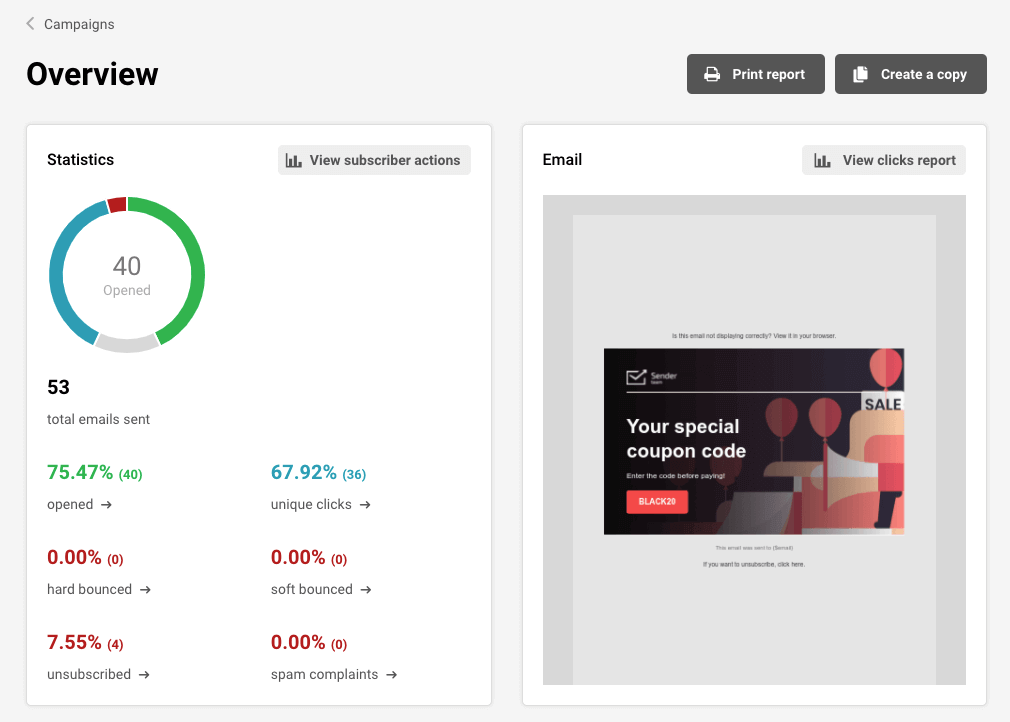
Challenges of Data-Driven Marketing
With every marketing strategy comes challenges and road bumps.
Here are some challenges most companies may face when looking to implement a data-driven marketing style:
Data Silos
When you have robust data scattered across various systems and platforms, analyzing and making informed decisions may become difficult.
It’s vital to prioritize data management and invest in integrated systems to break down these silos and create a holistic view of customer data.
Investing in a composable CDP can help break down these silos by providing flexible, modular software that integrates diverse data sources into a unified, accessible customer profile.
This holistic view empowers you to analyze and leverage your data for informed marketing decisions effectively.
Irrelevant Data
In a sea of information, focusing on relevant data is crucial.
Marketers can easily fall into the trap of drowning in unnecessary information. If you use AI data tools, you must also factor in the potential for “artificial intelligence hallucinations.”
This phenomenon occurs because AI models base their outputs on patterns learned from vast datasets. However, these models don’t truly “understand” the data in a human sense.
In some instances, AI systems might generate or interpret data in ways that are completely fabricated, misleading or inaccurate. And that’s despite being presented with a straightforward input.
Instead, these models make predictions based on statistical correlations, sometimes leading to erroneous or nonsensical outcomes.
By defining clear objectives, identifying key metrics, and using trusted analytics tools and human fact-checking, you can gather and analyze the data that truly matters.
Ever-Changing Data Collection
With a shift to a cookie-less world, many traditional marketing methods will soon fade into the distance. This means data and marketing efforts will also need to shift.
To adapt, be sure to explore alternative data collection and tracking methods, such as first-party data, consent-based strategies — and innovative technologies that respect user privacy while still providing valuable insights.
Contextual-based advertising is also a promising marketing approach. Instead of tracking behavior and customer interactions, it relies on context to place relevant ads.
As a marketer, it’s wise to follow and keep up with industry news to be aware of any changes in data collection as they take shape.
Data-Driven Marketing Examples
Nurturing potential customers to conversion takes careful attention to detail and strategy.
Here are some examples of using data analysis to plan marketing initiatives:
Scheduling Content to Post at Optimal Times
Data insights help you discover how and when to reach out to your target audience.
For instance, social media tools can generate reports that help you learn when to schedule your Instagram or Facebook posts. Having a social media approval process will improve your brand’s content because multiple people can share their insights. This gives you a leg up against competitors who post without considering engagement data trends.
Applying Lessons from A/B Testing Results
A/B tests help you hone in on campaign versions that result in the best conversions. For example, try out variations on your headline or CTA. Send one version to a portion of your audience and another to the rest. Whichever has the higher conversion rate is your winner.
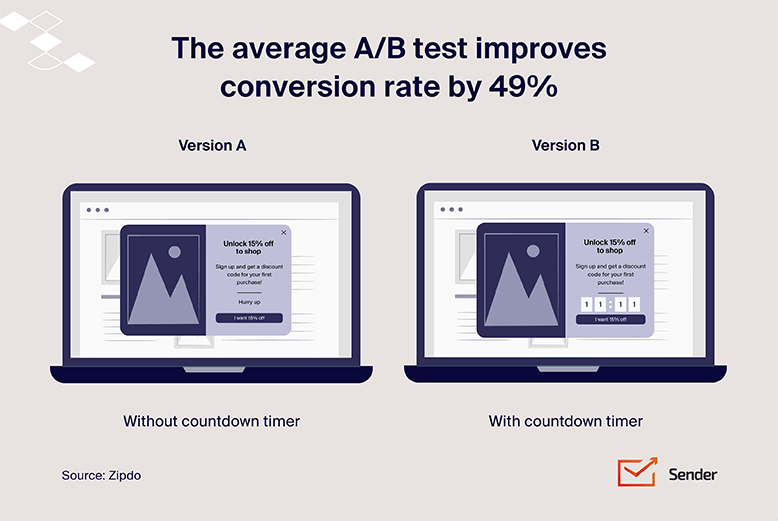
Applying these lessons is also a strategic way to cut down on marketing spend. By publishing ads with the best test results, you eliminate costly investments in less effective campaigns.
Implementing SEO Strategies
Optimized blog content helps you attract valuable leads to your website.
Every blog post that you write based on search intent has the potential to raise your domain authority score and nurture potential customers to conversion.
Let’s break down two examples, one from WealthUp and the other from Connecteam, to see how their approach differs.
This blog post by WealthUp targets keywords with low competition and high search volume, such as “brokerage promotions”:

And the following blog post by Connecteam targets the key phrase “employee scheduling app”:
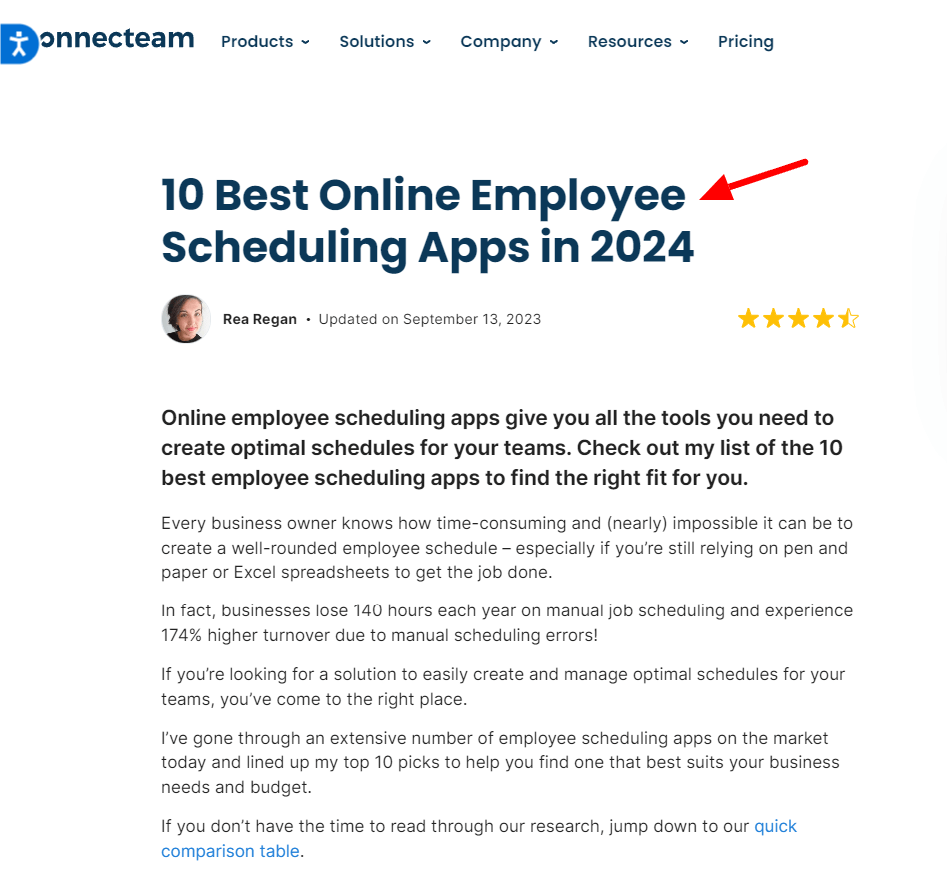
These brands didn’t choose their target keywords in vain.
They dug into SEO research to uncover why their audiences care about these terms — and how they can use them to address core pain points.
WealthUp’s audience wants to learn how to invest and grow their money. They research “brokerage promotions” to discover how to get the most out of their initial investments.
That’s why WealthUp compares the top offers its readers can benefit from in the brokerage promotions piece. The brand solves its pain points with an in-depth look at each promotion.
Conversely, Connecteam targets a higher-difficulty keyword, “employee scheduling apps,” in hopes of attracting more traffic.
Connecteam satisfies the reader’s search intent by:
- Helping searchers find the best employee scheduling tool for their specific business;
- Redirecting organic search traffic away from their competitors to their blog post;
- Grabbing a spot on the first page of the SERPs.
How to Create a Marketing Strategy Based On the Data
Tracking performance metrics and customer data helps you uncover which marketing channels to target and what creative assets to publish.
Let’s quickly review how to create a data-driven marketing strategy based on your KPIs and customer information.
1. Audience Segmentation
Use your analytics insights to accurately segment your audience into customer groups.
Depending on their behavioral patterns and core needs, you might segment them by:
- Audience type;
- Buying history;
- Funnel stage;
- Pain points.
2. Retargeted Ads
If you track third party data, use the information you collect to set up retargeting ads for lost or new leads.
For instance, if a group of prospects keeps viewing your goods without converting, follow them around the web with discount offers on the products they eyed the most.

This Facebook advertisement pops up to the audience who’s already interacted with the brand on other social media networks. For example, if a prospect browsed their Instagram page, watched their reel, or clicked on their marketplace item.
In other words, it follows the prospect until it converts.
Also read: Email Retargeting: 5 Steps Strategy to Win Customers
3. Contextual Ads
Contextual ads factor in context and relevance instead of sales data, demographic data, or consumer interactions.
To prepare yourself for cookie-less marketing, use paid ads that rely on context instead of audience behavior.
For instance, place graphic design ads in popular graphic design blogs, forums, and podcast episodes instead of across generic marketing channels.
Take inspiration from Buzzsprout and Canva, who’ve partnered up to help markets better brand their podcasts.

4. Personalized Email Marketing
Personalization isn’t just addressing your recipients by their names in newsletters. You can create targeted and relevant email campaigns by collecting and analyzing data, such as customer behavior and preferences.
Here’s a great example of a personalized newsletter from Spotify sent to everyone who listens to Olivia Rodrigo (like, a lot).

Personalized email marketing campaigns result in better engagement, higher conversion rates, and improved overall marketing effectiveness.
Reach the right audience with the right message at the right time with Sender.
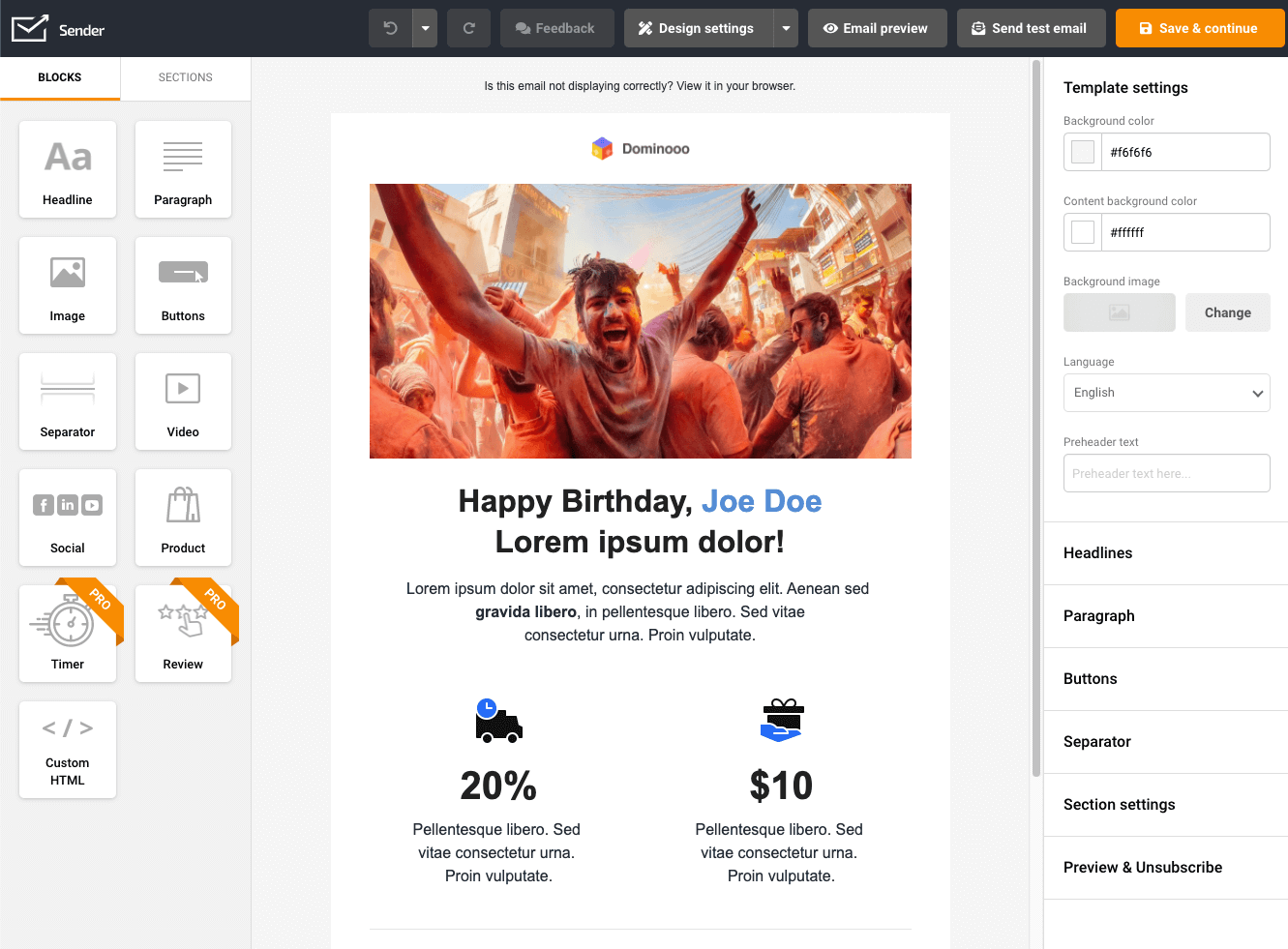
Also read: Email Personalization Unlocked: 12 Strategies You Can’t Miss
5. SEO Campaigns
Use SEO analytics tools and social media metrics to drive your content marketing strategy — including which topics and semantic keywords to target.
Dig into search intent to align with your target audience’s needs. Use these insights to create tailored social media content, website content, and blog posts.
Data-Driven Marketing Solutions
To gather data and make informed decisions, you need trusted tools to generate reports in real time.
Some data-driven marketing tools to consider adding to your tech stack include:
- SEO tools: Semrush, Ahrefs, Frase, and Google Analytics;
- Social listening tools: Keyhole.co;
- OAuth: OAuth 2.0 is a standard that allows users to grant websites access to their information without sharing passwords.
- Email marketing software: Sender;
- Customer data platform (CDP): Hightouch and Snowflake;
- Project trackers: Hive, ClickUp, and Monday.
Sign up for demos and trials and set up mock campaigns to test these data tools. Next, review pricing plans and meet with your team to pick the best option for your specific goals.
Data-Driven Marketing: Wrap-Up
Data drives modern marketing success. By creating a data-driven strategy for every marketing channel you target, you unlock endless conversion possibilities.
Best of all, data-driven marketing strategies help you learn more about your customers and goals. With these insights in hand, you can continue refining your sales approach, product and service offerings, and your business as a whole.
Remaining data-driven is a win-win approach — not only does your business thrive, but your customers do, too.
If you’re ready to dig deeper into data in 2024, bookmark, save, and share this article with your team.
And if you’re craving for more, check out these valuable blog pieces:
- Direct Marketing: What’s the Silent Force Driving ROI and Ways?
- What is Customer Segmentation? Definition, Examples & Tools
- What is Direct Response Marketing? Elements, Strategies & Examples
Author bio
Ioana Wilkinson specializes in Business, Digital Marketing, and SaaS content for B2B brands. Born in Transylvania and raised in Texas, Ioana has been living the digital nomad life since 2016. From Barcelona to Puerto Vallarta to her new abode in windy Oklahoma City, you’ll never know where Ioana will head off next.

